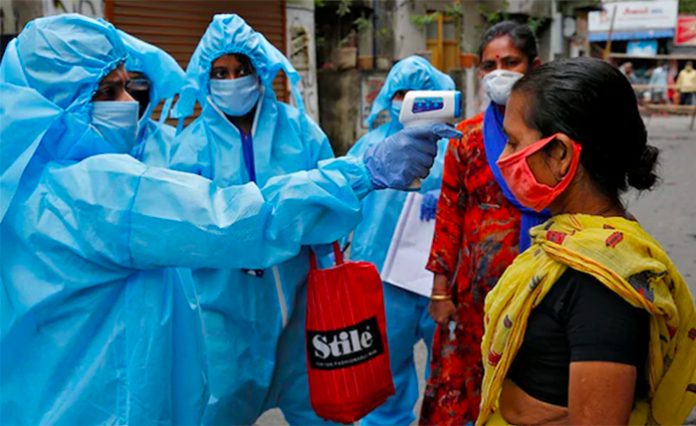Almost a quarter of people in New Delhi have had the coronavirus, according to a study that cast serious doubt on the official numbers both in the capital and across India.
Blood tests on 21,387 randomly selected people across the city conducted by the National Centre for Disease Control found that 22.86 percent of them had IgG antibodies – indicating past exposure to the virus.
With Delhi’s population of more than 20 million, the findings published on Tuesday by the federal health ministry suggest 4.7 million people have had the virus, almost 40 times the official tally of 125,000.
India last week became the third country – after the United States and Brazil – to hit one million cases, but many experts have long said that with testing rates low, the true number could be much higher.
Compared with those two countries and to global averages, the percentage of the Indian population that has died from the virus is significantly lower.
On Wednesday, India’s health ministry reported a total of 1.19 million coronavirus cases so far, with almost 29,000 deaths.
Number could be much higher
While praising government restrictions that have limited the spread of the virus, India’s health ministry said the study “indicates that a large number of infected persons remain asymptomatic”.
Dr Jayaprakash Muliyil, an epidemiologist at the Christian Medical College in the southern city of Vellore who is advising the government on virus surveillance, noted that the survey results are an average and the percentage of people infected could be much higher in certain areas, such as slums.
“You need to look at different clusters,” he said.
The survey was conducted between June 27 and July 10. Muliyil said the number of infections has likely increased since then.
More than 75 percent of Delhi residents are still vulnerable, including those at higher risk, Sujeet Kumar Singh, head of the National Centre for Disease Control, told a news conference.
Experts suspect that many virus deaths, especially among the elderly, are not being picked up in official fatality numbers. Testing is even more limited outside the national capital.
Initially, the virus was largely restricted to the country’s cities, where populations tend to be younger, and there are more hospitals.
But worrying surges have been detected in rural areas with more fragile health systems and in states with older populations.
Maharashtra, Delhi and Tamil Nadu states are the worst-affected by the novel coronavirus.
Prime Minister Narendra Modi’s government imposed one of the world’s strictest lockdowns in late March, but it has been steadily eased in recent months to lessen the devastating economic impact.
But independently from the federal government, states have been tightening restrictions as case numbers soared – including in Bangalore, Bihar, West Bengal and parts of Kerala and Tamil Nadu.
Daily new cases have been steadily falling in recent weeks, with fewer than 1,000 new infections recorded on Tuesday – the first time in 49 days – down from a peak of almost 4,000 in late June.
India’s top medical research body, the Indian Council for Medical Research, has asked the states to add more labs and enhance their testing capacity.
Speaking to Al Jazeera, Dr Ramanan Laxminarayan of the Center for Disease Dynamics, Economics and Policy said testing is low in India on a per capita basis.
“India ranks about 135 on the world ranking of testing per capita,” he said.
SOURCE: AL JAZEERA AND NEWS AGENCIES

















